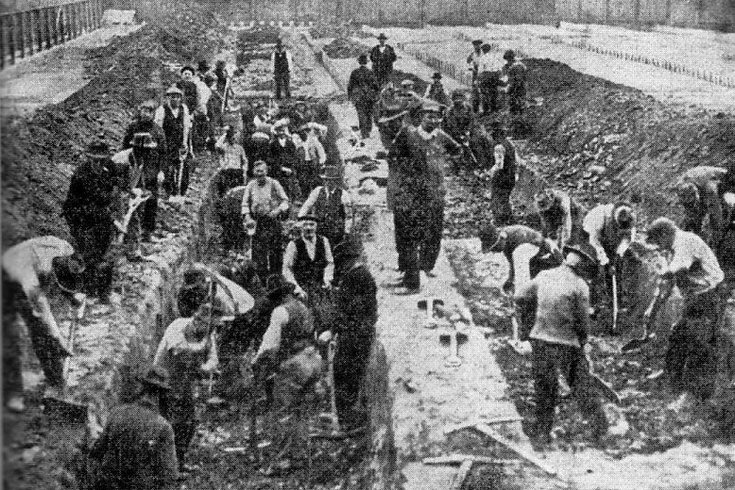
President Trump wants to “reopen” America is just less than three weeks. Here’s what he told a Fox News town hall on Tuesday:
“I would love to have the country opened up and just raring to go by Easter,” Trump said Tuesday during a Fox News town hall at the White House, later describing his April 12 target date as a “beautiful timeline.”
So what happens when you “reopen” for business as usual in the midst of a deadly pandemic? Residents of Philadelphia found out the hard way in the summer of 1918 when the politically appointed city director of public health overruled medical experts and gave the green light to a massive “Liberty Loans” parade intended to help boost morale and raise funds for the American war effort on the Western Front. An article at The Smithsonian sets the scene:
When the Fourth Liberty Loan Drive parade stepped off on September 28, some 200,000 people jammed Broad Street, cheering wildly as the line of marchers stretched for two miles. Floats showcased the latest addition to America’s arsenal – floating biplanes built in Philadelphia’s Navy Yard. Brassy tunes filled the air along a route where spectators were crushed together like sardines in a can. Each time the music stopped, bond salesmen singled out war widows in the crowd, a move designed to evoke sympathy and ensure that Philadelphia met its Liberty Loan quota.
Then it describes what happened next:
Lurking among the multitudes was an invisible peril known as influenza—and it loves crowds. Philadelphians were exposed en masse to a lethal contagion widely called “Spanish Flu,” a misnomer created earlier in 1918 when the first published reports of a mysterious epidemic emerged from a wire service in Madrid.
For Philadelphia, the fallout was swift and deadly. …
Within 72 hours of the parade, every bed in Philadelphia’s 31 hospitals was filled. In the week ending October 5, some 2,600 people in Philadelphia had died from the flu or its complications. A week later, that number rose to more than 4,500.
The death toll would eventually top 12,000 Philadelphians. The city would need help to literally clear bodies from the streets. Wilmer Krusen, the city’s appointed director of public health, had, despite knowledge to the contrary, denied that influenza was a serious threat to the city. But as The Smithsonian’s article points out, Krusen’s decision to let the parade go ahead was driven by fear. Just not fear of the virus.
Krusen’s decision to let the parade go on was based on two fears. He believed that a quarantine might cause a general panic. In fact, when city officials did close down public gatherings, the skeptical Philadelphia Inquirer chided the decision. “Talk of cheerful things instead of disease,” urged the Inquirer on October 5. “The authorities seem to be going daft. What are they trying to do, scare everybody to death?”
And, like many local officials, Krusen was under extreme pressure to meet bond quotas, which were considered a gauge of patriotism. Caught between the demands of federal officials and the public welfare, he picked wrong.
A century later, President Trump, and a growing chorus of his toadies, want to repeat the disaster of Philadelphia in 1918, but on a potentially nationwide scale. That could result in as many as 126 million infections and more than 1.3 million deaths.
Our best hope under those circumstances is for clear-headed governors and mayors to hold the line and defy any call from the White House to reopen the country.